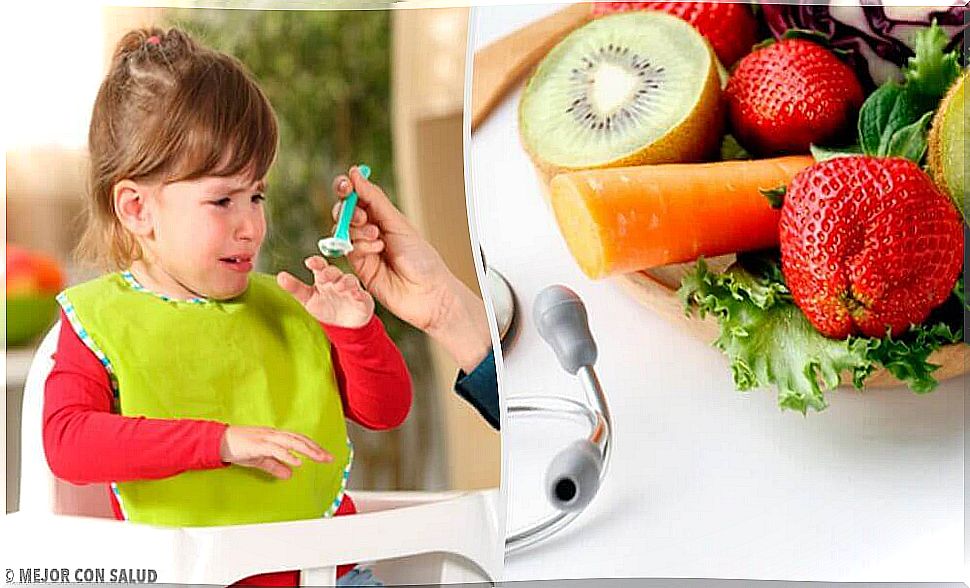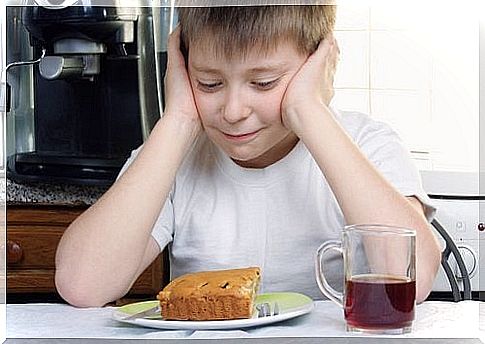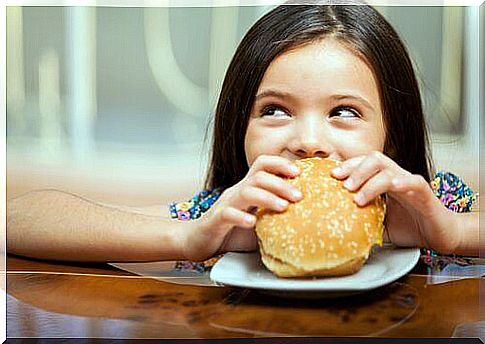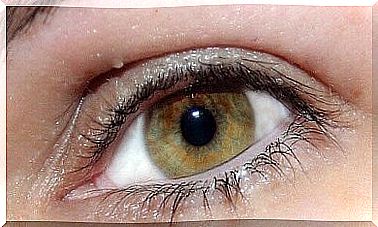What Is Selective Eating And How Can It Be Prevented?

Selective eating, which is typical of children in particular, means that a person does not eat certain foods or he eats only a handful of foods. It can cause many problems in the future, such as anorexia or bulimia. Read more in this article.
What is selective eating?

Selective eating begins in childhood and restricts or avoids eating certain foods.
Although parents initially accept this food behavior from their child (to make it easier to cook or save time, they let the child choose their own food), it can cause a lot of problems in the child’s development.
This selective eating associated with whims or bad habits results in the child eating only the foods they like and refusing to eat foods they “don’t like”. In most cases, “permitted” foods are burgers, french fries, pastries, and pizzas, and “forbidden” foods are fruits and vegetables. A selectively eating child gets their food from junk food and never tries broccoli, apples or lentils.
Selective eating eventually leads to nutrient deficiencies, as the child does not get enough vitamins, protein and other nutrients the body needs from its food.
Selective eating may “disguise” behind the fact that a child is supposed to have only the freedom to eat what he or she wants. But even if a child does not want to eat fruits or vegetables, eating them would be important for the child’s health as well as growth and development.
A person’s future depends on his childhood eating habits. A picky eater performs worse in school, often falls ill and stays short.
Selective eating is a mental problem

Selective eating is automatically associated with nutritional problems and nutrient deficiencies. It can also be associated with bulimia or anorexia, as it is a disorder that requires medical attention. For this reason, a child with selective cancer should be taken to a therapist. The child should also be evaluated by a nutritionist or pediatrician.
Children use this selective eating as a means to express themselves or communicate. “Between the lines” lies a core problem that needs to be addressed.
Crying when there is leaf chard on the plate, spitting food containing carrots from the mouth, or crying while eating usually stress parents. Because parents don’t want to see their child suffer, they only prepare food approved for them by the child. While the attitude and intentions of the parents are good, they cause more harm to the child than they think.
The problem gets worse, and soon the child agrees to eat only two or three foods.
How to identify selective eating in a child?

Selective eating is more common in boys than girls. In addition to avoiding certain foods, there may be other symptoms:
- Anxiety problems
- Social isolation
- Obsessive and compulsive features
- Poor adaptability
- Irritability and mood swings
- Uncontrollable cries of crying and crying
- Nutrient deficiencies and weight loss
- Growth and development slowdown
What causes selective eating? How can this be prevented?

Selective eating is not due to any one factor, but problems with the parent-child relationship can cause it.
One way a child expresses dissatisfaction, needs attention, or asks for affection is by choosing their own food or crying while eating. Stress, trauma, or lack of parental care can also trigger this problem.
On the other hand, selective eating can also be due to overprotection. Children who do not accept a negative response or do what makes them amused may suffer from this disorder. Other reasons include a lack of rules or boundaries and compensation for giving attention or time with laziness or gifts.
In order for parents or other caregivers to prevent a child’s pickiness (“I don’t like this,” “I don’t eat this,” or “I don’t want this”) with meals, they need to be smart and patient. When a child says “no” for the first time, there is no point in threatening him or saying, for example, “well you still have to eat it because I tell you”. It is good to know that children imitate their parents and other adults around them.

Thus, if a child’s father, mother, or older sibling is selective about food or says they hate certain foods, the child will certainly reject the same foods.
The family diet must consist of all kinds of foods. For example, if one parent demands different food than the other, the child must either be involved in this process or be completely excluded from the discussion.
Trying different recipes, making fun and colorful meals, and encouraging children to get involved in cooking are great ways to teach a child to eat all kinds of foods.
It is a good idea to offer fruit and vegetables to your child from an early age and not to feed him or her constantly with carbohydrates, fats and sugar. This helps to improve the child’s health, promotes his development and prevents eating disorders.









